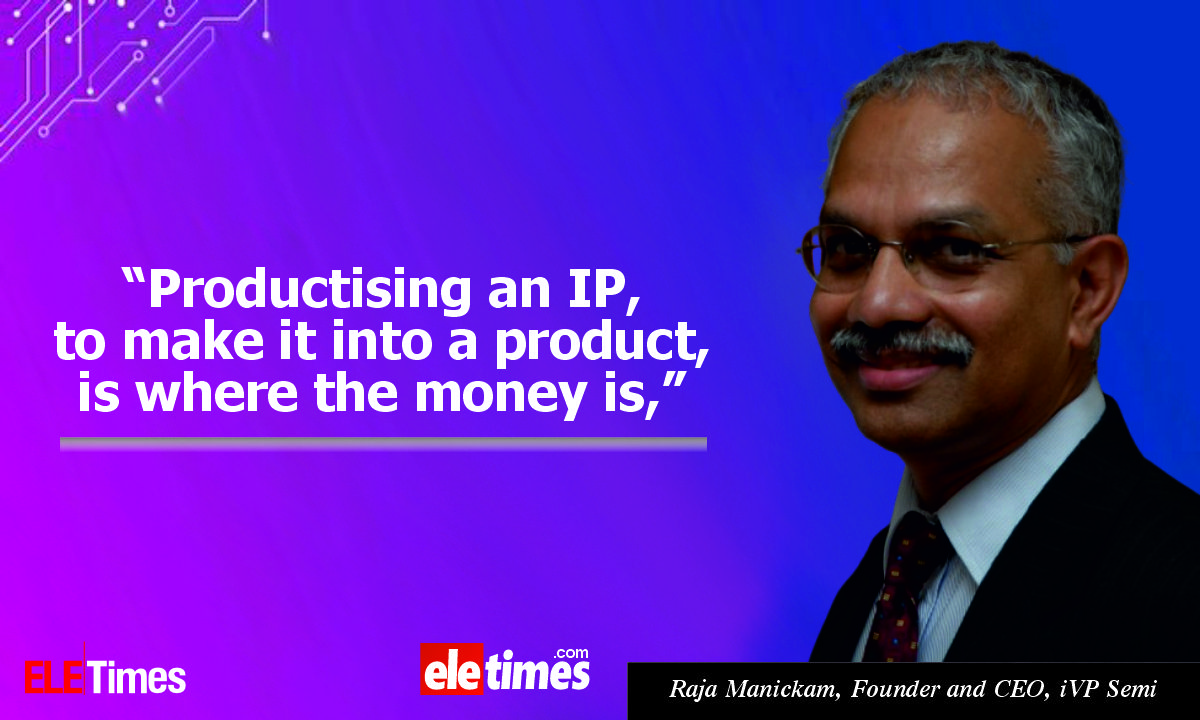“Productizing an IP, to make it into a product, is where the money is,” remarks Raja Manickam, a semiconductor industry veteran with 4 decades of industry experience and Founder & CEO, iVP Semi, in an exclusive interaction with the ELE Times at Semicon India 2025. This is amidst the central government empowering the semiconductor industry through various schemes, including the DLI scheme with a capital outlay of around Rs 1,000 Crore.
Emphasizing his global outlook, Mr. Manickam draws parallels with chip giants to frame India’s semiconductor journey within a larger global vision. He asserts, “Creating IP is not the issue for us at all. The myth is that we need IP to make a product.” Challenging this notion, he stresses that IP alone does not define standards in the semiconductor industry. Instead, he urges India to focus on building stronger pathways to productization, which he believes is key to enabling a complete and sustainable ecosystem.
Focus On Substantial Value Addition
By drawing on examples of global chip brands, he reimagines India’s journey in semiconductors and electronics through a global lens.“Product companies make the most money out of the whole value chain and can build globally recognizable brands like NVIDIA or AMD,” he explains. Highlighting how every semiconductor crosses countless stages before becoming part of a final product, he points out that true value lies not just in designing chips but in building strong product companies that can scale globally.
He also refers to his company, iVP Semi, which emphasizes developing tangible products such as DC-DC inverters, relays, solid-state relays, power modules, and powertrains, instead of pursuing an IP-licensing model. iVP Semi reflects a deliberate and measured vision, shaped by Mr. Manickam’s long-standing commitment to fostering homegrown product companies.
With this perspective, he calls attention to the pressing need for a holistic semiconductor ecosystem—one that nurtures both talent and value creation, anchored in a long-term and reliable vision.
Figuring Out the Systems Approach
He says,” To make a chip, they need multiple IPs. They may have one IP or they may not even have an IP,” referring to the chip giants. “But they have figured out how to put all these IPs together and make a product,” he adds, further validating his stance.
In the conversation surrounding Design IPs, he seems to have a certainly different opinion that focuses on realigning India’s semiconductor ambitions towards realizing a systems approach that holds higher potential and can garner substantial and long-term value for the Indian talent and economy, both.
Focus on Startups
With this approach in mind and a quest to see India reach this potential, he urges big companies and corporations to adopt small companies and help them with capital and talent, both to realise this dream. He says,” So, my philosophy is to adopt these guys. But don’t look at it from an ROI,” as the conversation wraps up.
| Raja Manickam, an IIT Kharagpur graduate, is a semiconductor veteran who founded Tessolve in 2003, growing it into a 1,000-crore global leader before its acquisition by Hero Electronix. He later served as the first CEO of TATA Electronics OSAT and founded Ponni Tech Consultants in 2023. In 2024, he launched iVP Semi to localize chip production and drive India’s semiconductor self-reliance. His vision is to build a robust ecosystem that attracts global partners to India. |







